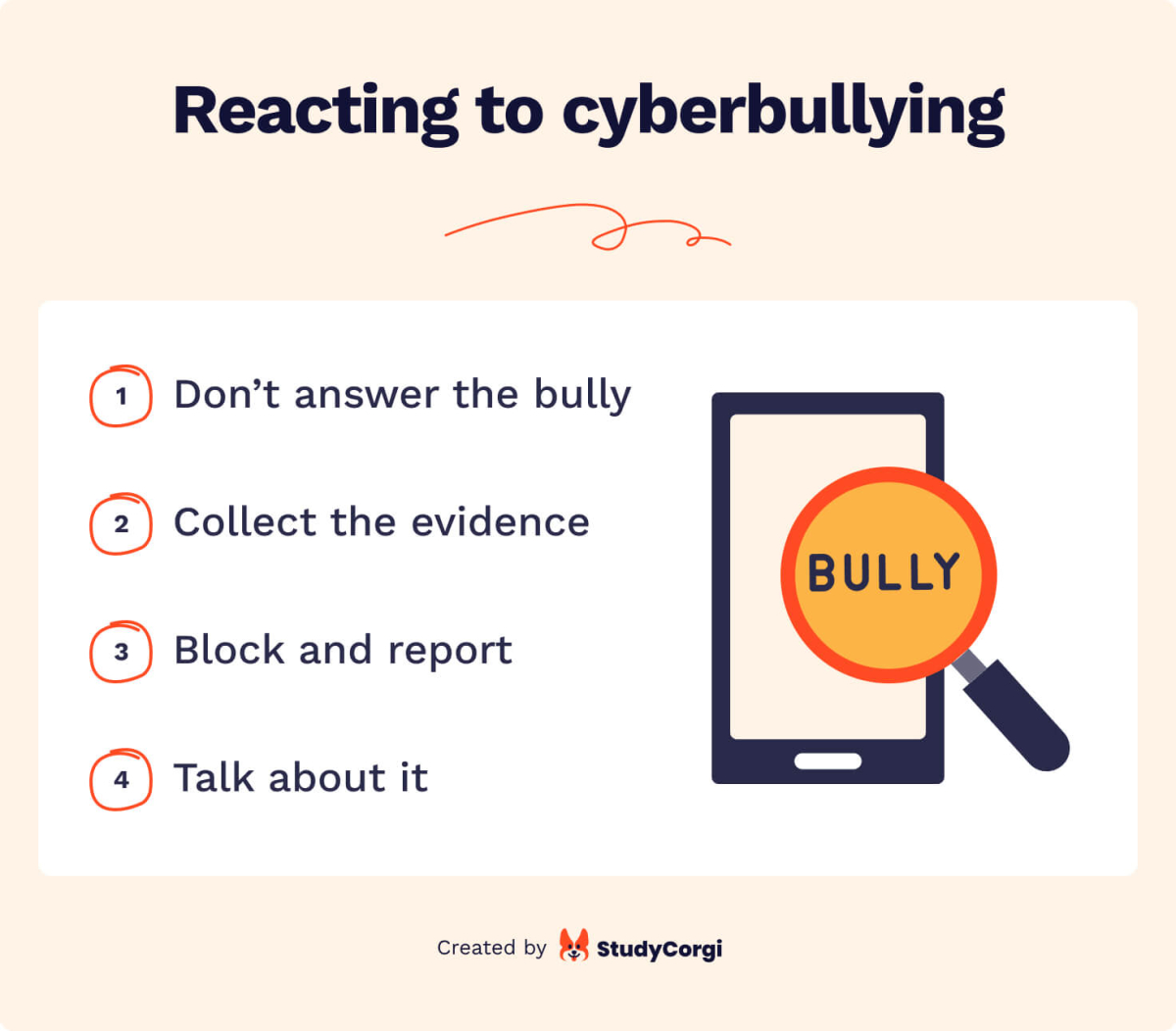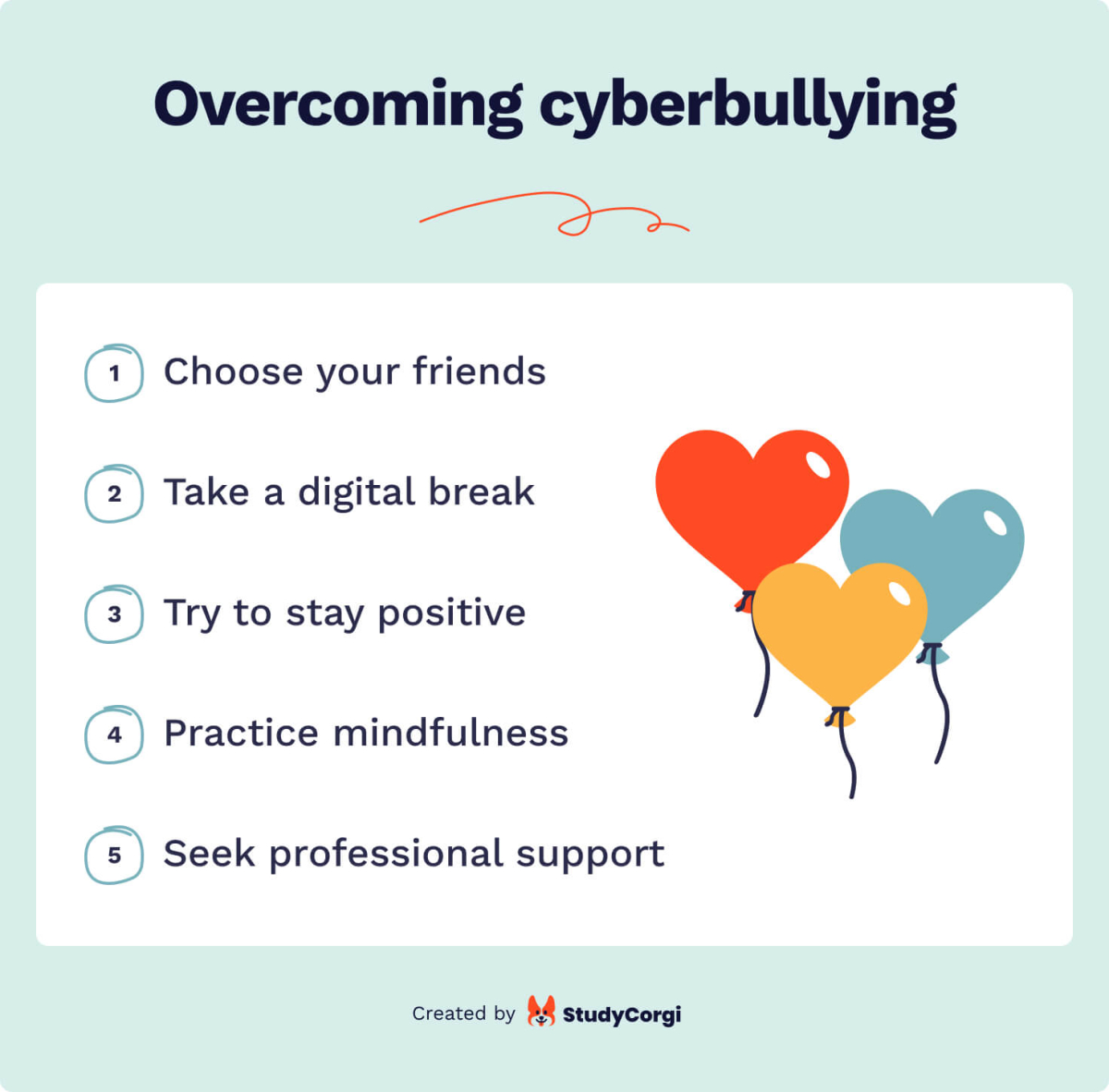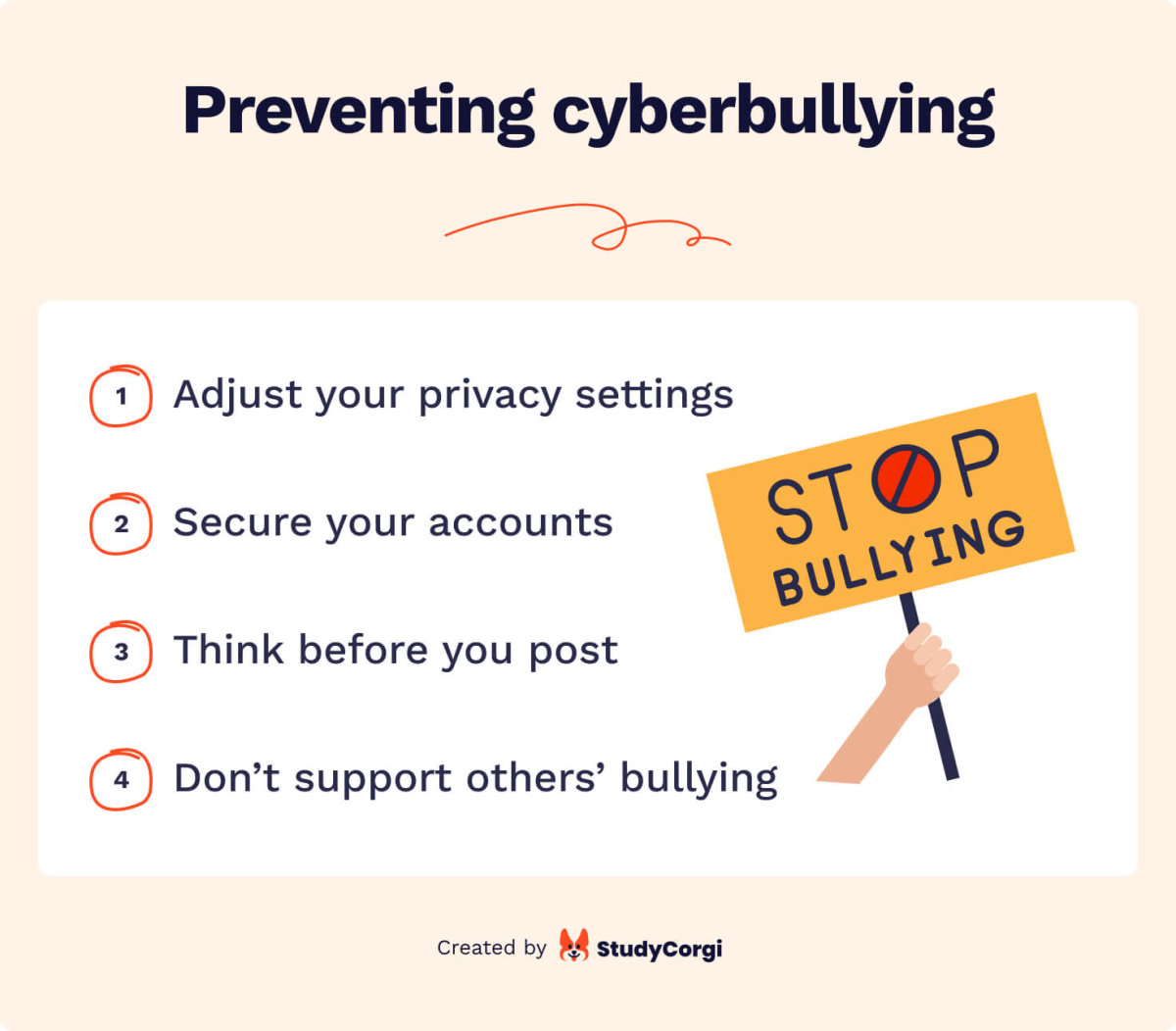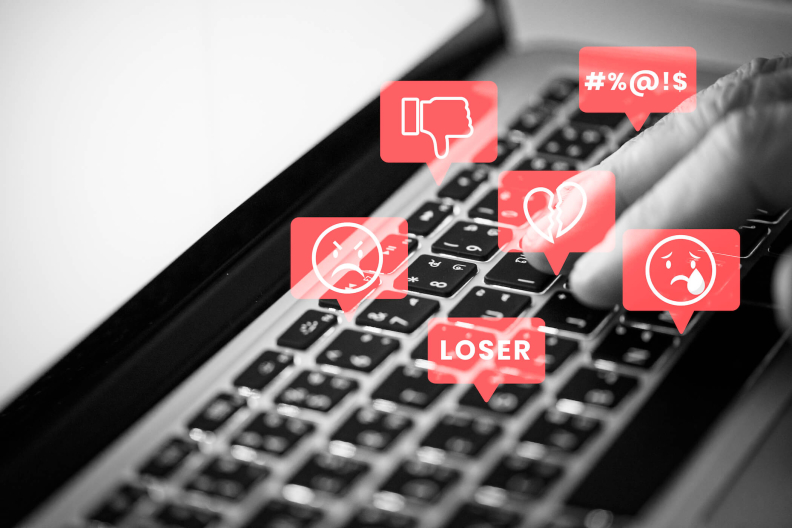Why don’t you just turn off your computer and go play outside? That’s the question people who have never been a victim of cyberbullying usually ask. But for most teenagers, “unplugging themselves” is akin to social starvation.

It’s heartbreaking to learn that cyberbullying is growing worldwide, especially in the United States. Instances of online bullying doubled from 2007 to 2019, reaching 37% of the population.
According to the National Center for Education Statistics, 20% of schoolchildren (middle school and above) report being bullied each year. That’s one out of every five kids.
Bullying and cyberbullying make children twice as likely to attempt suicide. It affects their school performance and mental health. In fact, 60% of affected students claim that this experience worsened their learning abilities.
In this article, we will:
- Explain what you can do if you are cyberbullied
- Provide you with 13 cyberbullying safety tips
- List helpful online resources for the victims of online harassment
Let’s dive right in!
👿 What Is Cyberbullying?
Cyberbullying happens when someone uses technology (websites, social media, email, text, or instant messages) to harass, torment, threaten, or humiliate someone.
The term stems from the word “bully,” which appears to have first been used around 1530. Its etymology traces back to the Middle Dutch word “boele,” which means “lover.” The English language adopted it in the sense of a “sweetheart.”
By the 1700s, a “bully” had transformed into a “fine fellow,” and then, finally, it became a “swaggering coward.”
Throughout the 18th and 19th centuries, aggressive behavior was viewed as a regular part of childhood. Bullying first raised public concern in the 1970s, when Dan Olweus studied abusive behaviors and their harmful consequences.
Many other psychologists took up his initiative and contributed to understanding school violence. In 2018, 63% of teenagers named cyberbullying a major problem affecting people their age. And unfortunately, the number is growing.
12 Types of Cyberbullying
In this section, we’ll explain what the 12 types of cyberbullying are. Find an infographic and the descriptions below.

Harassment
Cyberbullying is often referred to as online harassment. This is a broad category that encompasses many types of cyberbullying. But in its narrowest sense, it is a sustained pattern of sending threatening online messages to harm someone.
Cyberstalking
This category covers the cases in which someone repeatedly harasses, intimidates, or threatens someone with the help of technology. They may even attempt to meet their victims in person or secretly follow them. Many such cases are initiated by adults seeking sexual relationships with underage children.
Exclusion
Exclusion is a type of cyberbullying in which participants create events or online groups that deliberately leave someone out. For instance, all classmates are invited to a party, while only the victim is excluded. Such cases are often discussed at school, so the victim knows it was not a mistake.
Denigration
Posting rumors or gossip online is called denigration. The purpose is to ruin someone’s reputation and relationships with their peers. For example, a story that someone’s parent has been to jail can become a basis for further bullying (exclusion, flaming, dissing, etc.).
Masquerading
Masquerading occurs when someone creates a fake identity online to cyberbully someone else. In most cases, the bully tries to present themselves as someone the victim knows well. Cyberstalkers also use this method to avoid recognition or punishment.
Catfishing
Catfishing is a variant of masquerading that is widespread on dating websites. The bully uses someone else’s photos to create a fictitious identity. It is not a crime but may lead to undesirable consequences, like the victim transferring money or gifts to the bully.
Trolling
Trolling means systematic inflammatory comments on the victim’s publications or their profile. The most frequent example is derogatory comments under someone’s photos (about their physical imperfections, real or far-fetched), fat shaming, slim shaming, etc.
Flaming
Flaming involves insults and profanity sent to the victim or posted about them on social media. It is similar to trolling but is a more direct attack to ignite online fights (trolling does not necessarily lead to quarrels).
Outing or Doxing
This type of cyberbullying happens when someone shares sensitive information about another person’s private life. The purpose is to humiliate their victim. Examples include divulging personal photos, videos, or text messages without the victim’s consent.
Trickery
Trickery is a variant of outing, with the difference being that the victim is deceived. The bully befriends their target, creating a false sense of security. Then they disclose the victim’s embarrassing secrets.
Fraping
Fraping happens when the victim’s social networking accounts are hacked to post inappropriate content. This category may combine with outing when the bully creates an impression that the victim has voluntarily shared their personal information. In other cases, racial or homophobic comments can ruin the target’s reputation.
Dissing
Dissing is widespread among acquaintances and friends. They spread cruel information about their peers in public posts or private messages to ruin the victim’s reputation.
🤷 How to Know if You’re Being Bullied?
It’s ok for friends to joke about each other. But some jokes can bring emotional pain or even depression. Here are some red flags to help you tell the difference (from the slightest to the severest).
- Others laugh at you, not with you.
- The joke has gone too far and continues after you have asked them to stop.
- The joke results in unwanted attention, even from strangers.
- You feel hurt, stupid, embarrassed, angry, or even afraid.
- It makes you lose interest in the things you usually enjoy.
- It makes you avoid social interaction.
- It brings sleep deprivation, stomachaches, headaches, and appetite loss.
- You start having suicidal thoughts.
🤓 How to Deal with Cyberbullying – 13 Tips
It’s time to learn the most effective cyberbullying safety tips to react to an attack and minimize its harm, recover from a cyberbullying incident, and prevent further bullying.
Reacting to Cyberbullying
What should you do if you are being cyberbullied?

Tip #1: Abstain from Answering
Most of us will feel the urge to respond directly and immediately, but this is the wrong strategy. Replying to hurtful posts or comments usually worsens the situation and shows the bully that you’ve been hooked. Instead, take a look at the following advice:
- Keep calm. Feeling angry or upset is a normal human reaction. Still, responding with insults will just fuel the fire.
- Responding with non-insults is not a great way to act either. Even saying, “I’ll report you,” isn’t usually effective.
- Silence is the best answer.
Tip #2: Collect the Evidence
Save each message, email, post, or image the cyberbullies send or publish about you. You’ll be able to use it as proof of their harmful actions later.
- Bookmark the web pages where the insults were posted.
- Take screenshots of the publications because the bully may delete them later on.
- Don’t delete the harmful content, even if you want to (if reasonably possible).
The day to use this evidence to report and stop them will definitely come.
Tip #3: Block & Report
You can do this after the first instance of cyberbullying to avoid further harm. Block the aggressive account from accessing your profile and report it to the service providers. Most social media platforms feature “block” and “report” buttons next to each publication or message. Below you can find the links to the policies and procedures of the most popular social networking websites:
If none of the above is helpful, visit cyberbullying.org. You’ll find a list of reporting links and mental health providers there.
Tip #4: Talk About It
This rule particularly applies if you are a teenager. Find an adult you trust (your parents and close relatives are often the best options) and tell them what has happened to you online. Together, you can develop a plan of action. Here are several tips on how to conduct this unpleasant conversation:
- Find a place where nobody can overhear or interrupt you.
- Don’t conceal any facts, no matter how uncomfortable they may be for you.
- Speak up about the emotions and thoughts you experienced in the situation.
Overcoming Cyberbullying
How to overcome cyberbullying?

Tip #5: Choose Your Friends
Never underestimate the psychotherapeutic effect of true and sincere friends. The majority of bullies are only acquaintances (and sometimes not even that) and don’t know you very well.
Don’t waste your time on people who bring negativity. Instead, focus on the friends who cherish you as you are. Maybe some of them are good listeners, and you could share your concerns with them.
If the bully claims that “nobody likes you” or “you have no friends,” remember they transmit their inner world, not your reality. Friends come and go, and sometimes, you can feel lonely. But in no case should that affect your self-esteem. Look for people with shared interests and give them a chance to learn more about you. Finally, don’t forget to be a good friend yourself. That’s not a simple task, by the way.
Tip #6: Take a Digital Break
Tip #7: Don’t Stew Yourself in the Negativity
You’ve saved the evidence, blocked the bully, reported them, and talked to an adult about the situation. That might be all you can do for now. Try not to delve back into thoughts about how hurtful it felt and what other people may have thought about you.
Don’t look at the screenshots again and again. That only gives more power to your bully.
Tip #8: Practice Mindfulness
You can learn more about mindfulness for students on custom-writing.org.
Tip #9: Seek Professional Support
If you cannot find an adult you trust, write to the 24/7 online support network. They can give you advice about potential actions, listen to your concerns, and provide psychological counseling.
Preventing Cyberbullying
How to prevent cyberbullying?

Tip #10: Secure Your Accounts.
You probably already know that you shouldn’t share your phone number or home address with anyone on the internet. You can make your email and screen name only visible to people you trust and know in person. Keep your passwords in secure places and use different login data on every website.
Cybersecurity is a huge topic. Visit this guide to learn how to ensure your online safety.
Tip #11: Adjust Your Privacy Settings
Take a little time to familiarize yourself with the privacy settings of every website you frequently visit. Restrict access to your information as much as possible and report any privacy violations and cyberbullying attempts. Limit access to your digital life to a close circle of trusted people.
UNICEF has collected an exhaustive list of privacy adjustments for the most popular websites. Even experienced users of social networks will find new information there.
Tip #12: Think Before You Post
Cyberbullies are professional at stealing your secrets, twisting your words, and editing your photos to use against you. Thus, before sharing any of your thoughts or visual content online, stop and think if you really want someone to have access to this data several years from now.
It is also a good idea to edit your timeline once in a while. Look through your past publications and delete anything questionable.
Tip #13: Never Support Others’ Bullying
This is an obvious cybersecurity safety tip many forget to observe. Liking abusive publications and participating in the public ridiculing of a friend (even anonymously) encourages bullies. If you don’t believe in karma, consider the statistics at the beginning of this article. How long until you become one of the “one” out of five?
Focus your desire for online activity on supporting anti-bullying campaigns. Add your voice to the choir of those who think that abuse in any form should be stopped.
🌐 Cyberbullying Resources
We’ve offered numerous resources on how to deal with cyberbullying in this article. Still, if you become a victim of online harassment, you will find helpful resources in the following section as well. For your convenience, we’ve categorized them by country.
The U.S.
The U.K.
Canada
Australia
We hope that you chose to read this article to secure yourself against future online threats and not because something negative has happened to you. In any case, you are welcome to share your experiences in the comments below. Your story may save someone from going through the same nightmare.
